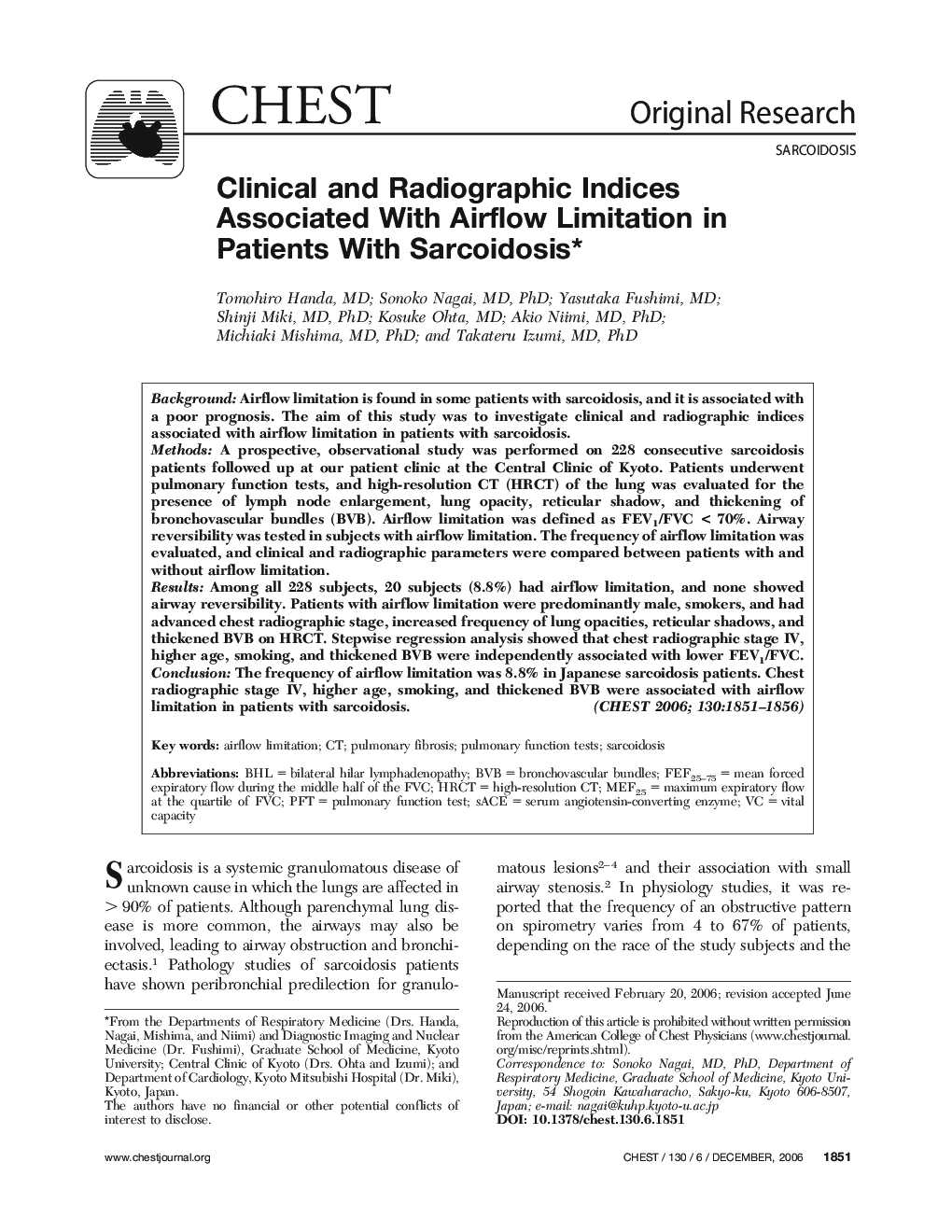| Article ID | Journal | Published Year | Pages | File Type |
|---|---|---|---|---|
| 2905723 | Chest | 2006 | 6 Pages |
BackgroundAirflow limitation is found in some patients with sarcoidosis, and it is associated with a poor prognosis. The aim of this study was to investigate clinical and radiographic indices associated with airflow limitation in patients with sarcoidosis.MethodsA prospective, observational study was performed on 228 consecutive sarcoidosis patients followed up at our patient clinic at the Central Clinic of Kyoto. Patients underwent pulmonary function tests, and high-resolution CT (HRCT) of the lung was evaluated for the presence of lymph node enlargement, lung opacity, reticular shadow, and thickening of bronchovascular bundles (BVB). Airflow limitation was defined as FEV1/FVC < 70%. Airway reversibility was tested in subjects with airflow limitation. The frequency of airflow limitation was evaluated, and clinical and radiographic parameters were compared between patients with and without airflow limitation.ResultsAmong all 228 subjects, 20 subjects (8.8%) had airflow limitation, and none showed airway reversibility. Patients with airflow limitation were predominantly male, smokers, and had advanced chest radiographic stage, increased frequency of lung opacities, reticular shadows, and thickened BVB on HRCT. Stepwise regression analysis showed that chest radiographic stage IV, higher age, smoking, and thickened BVB were independently associated with lower FEV1/FVC.ConclusionThe frequency of airflow limitation was 8.8% in Japanese sarcoidosis patients. Chest radiographic stage IV, higher age, smoking, and thickened BVB were associated with airflow limitation in patients with sarcoidosis.
